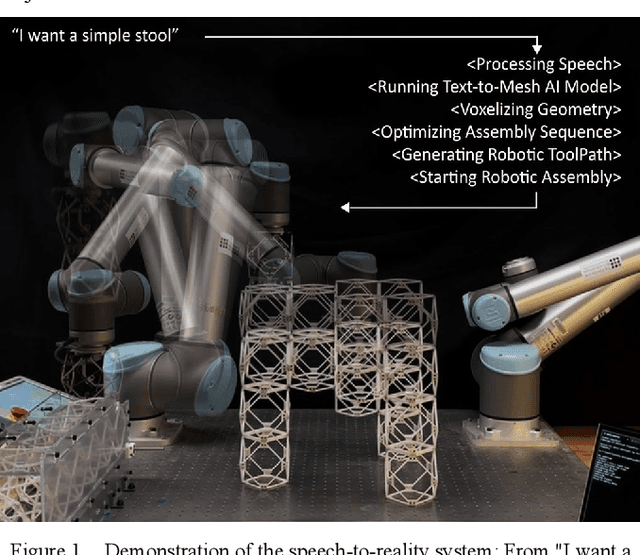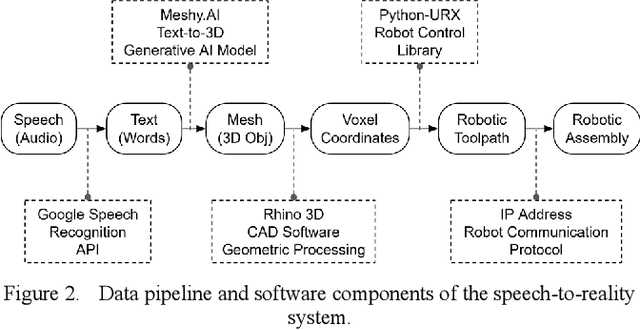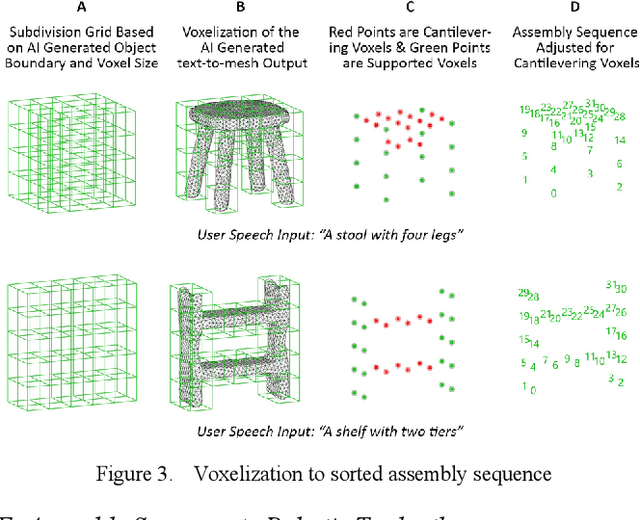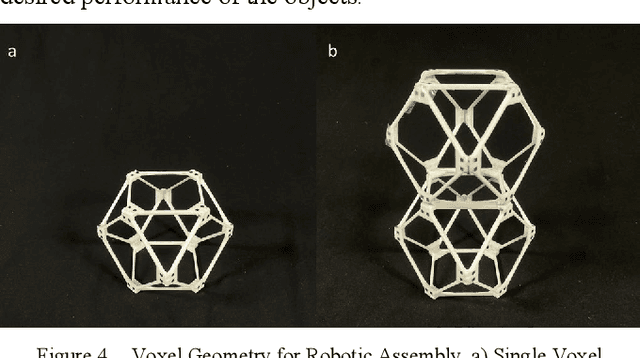Miana Smith
Data-driven Feedback Control of Lattice Structures with Localized Actuation and Sensing
Oct 11, 2024Abstract:Assembling lattices from discrete building blocks enables the composition of large, heterogeneous, and easily reconfigurable objects with desirable mass-to-stiffness ratios. This type of building system may also be referred to as a digital material, as it is constituted from discrete, error-correcting components. Researchers have demonstrated various active structures and even robotic systems that take advantage of the reconfigurable, mass-efficient properties of discrete lattice structures. However, the existing literature has predominantly used open-loop control strategies, limiting the performance of the presented systems. In this paper, we present a novel approach to feedback control of digital lattice structures, leveraging real-time measurements of the system dynamics. We introduce an actuated voxel which constitutes a novel means for actuation of lattice structures. Our control method is based on the Extended Dynamical Mode Decomposition algorithm in conjunction with the Linear Quadratic Regulator and the Koopman Model Predictive Control. The key advantage of our approach lies in its purely data-driven nature, without the need for any prior knowledge of a system's structure. We illustrate the developed method via real experiments with custom-built flexible lattice beam, showing its ability to accomplish various tasks even with minimal sensing and actuation resources. In particular, we address two problems: stabilization together with disturbance attenuation, and reference tracking.
Speech to Reality: On-Demand Production using Natural Language, 3D Generative AI, and Discrete Robotic Assembly
Sep 27, 2024



Abstract:We present a system that transforms speech into physical objects by combining 3D generative Artificial Intelligence with robotic assembly. The system leverages natural language input to make design and manufacturing more accessible, enabling individuals without expertise in 3D modeling or robotic programming to create physical objects. We propose utilizing discrete robotic assembly of lattice-based voxel components to address the challenges of using generative AI outputs in physical production, such as design variability, fabrication speed, structural integrity, and material waste. The system interprets speech to generate 3D objects, discretizes them into voxel components, computes an optimized assembly sequence, and generates a robotic toolpath. The results are demonstrated through the assembly of various objects, ranging from chairs to shelves, which are prompted via speech and realized within 5 minutes using a 6-axis robotic arm.
 Add to Chrome
Add to Chrome Add to Firefox
Add to Firefox Add to Edge
Add to Edge